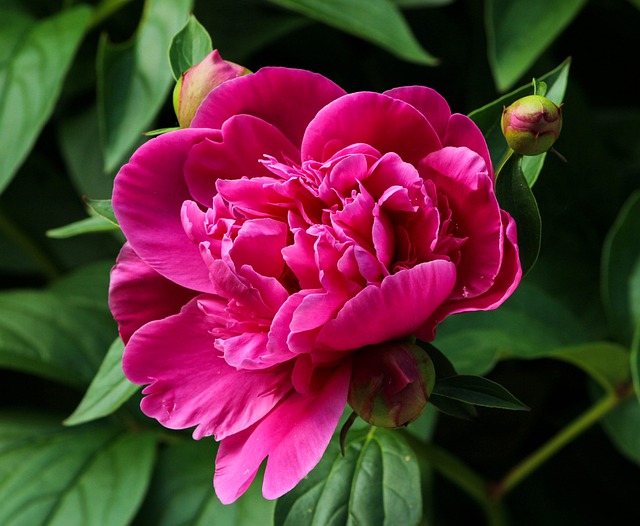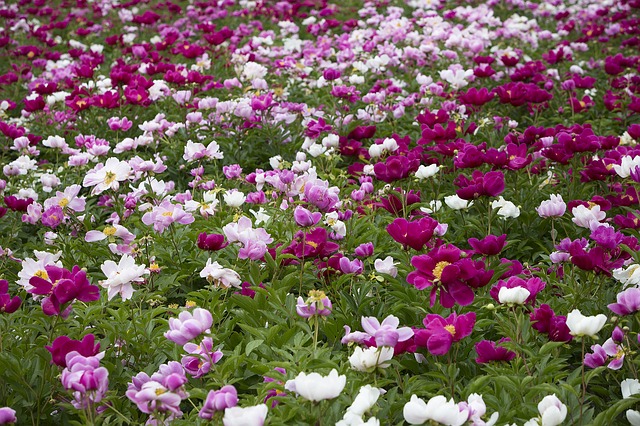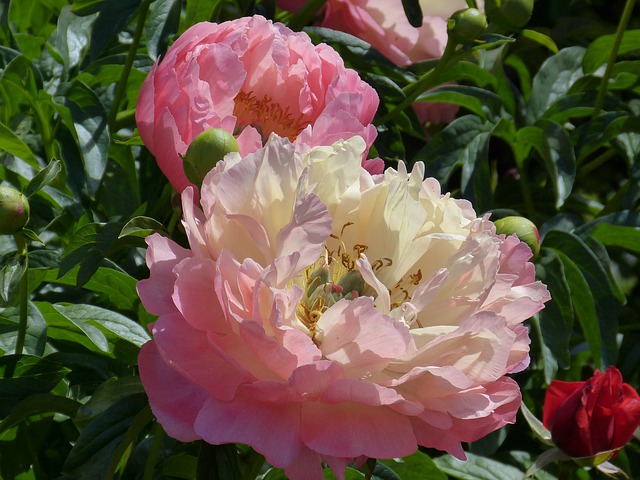Peony Growth Stages

They can live anywhere if they get the right care and conditions. Every year, peonies start their life cycle in the soil, and the whole plant dies back in the fall. But what are the stages of peony growth?
Peonies take 3 to 4 years to reach full maturity. During this time, they go through different stages of growth, starting with the seed stage, bud swelling, germination, leaf opening, growth, bloom bud enlargement, bud coloring, and flower opening.
Table of Contents
Peony Flowers at Various Growth Stages
Its first year of development is critical for root formation and seed germination. Possibly smaller and with a different shape and color palette than the mature flowers, first-year blooms are possible.
Seed Stage
The seed stage typically lasts 6-12 weeks and corresponds to initiating germination. You should soak them for several days in squeaky-clean, room-temperature water to help the seed break free of its shell. Plant the seed about 2-3 inches deep after daily water changes. Peony seeds can take anywhere between 4 and 12 weeks to sprout.
Your peony seeds will successfully sprout into seedlings, and you will soon see leaves appear. The life cycle of a plant starts with a seed. It has an embryo inside, which grows into a full-grown plant. A dicot is what the peony seed is. Dicot seeds have two cotyledons, which are the early leaves. The seed coat is a tough covering on the outside of the seed that protects the embryo inside. Some seeds can live for a long time if kept cool and dry.
Bud Swelling Stage
During the bud swelling stage, the peony buds pop out of the shiny scales and shoot up. The buds turn red, orange, or pale yellow and look like chili peppers stuck in the ground.
These buds won’t bloom yet, but they will change into the shape of a peony plant. There are many kinds of peonies, so the swelling stage and how long it lasts depend on the kind you are growing.

Bud Sprout and Shoot Emergence Stage
At this stage, the scales on the buds start to open, and the shoots slowly come out. The baby leaves, on the other hand, will stay folded and tightly packed inside. After that, the stems and leaves will get bigger, and the shoots will grow quickly.
Leaf Opening
As the stems and leaves mature, the petioles begin to lengthen, which causes the opening of curved leaflets and the emergence of the flower bud. This process occurs as the plant matures.
When this phase is over, the stem will continue to grow until it reaches a height of between two-thirds and four-fifths of a foot, the maximum height it will ever reach. During this stage, there is a possibility that several cases will witness the appearance of early flower abortion.
Leaf Extension
At this point, the leaves have already begun to expand outward, which is what causes them to droop and take on a flat shape. At this point, the flower bud also starts to appear on top of the plant’s upper leaves.
Bloom Bud Enlargement
During this stage, the flower buds will experience significant growth. As a result of this process, excrete exudation occurs as the flower stem grows larger and extends beyond the upper leaves.
Coloring of the Buds and Maturation of the Plants
This is the stage that takes place at the same time that the bloom buds begin to open. Additionally, the color of the petal becomes more apparent at this stage. But if you notice your peony turning white, it may cause concern.
Flower Opening
Peonies go through several stages of growth before reaching this final stage. During this time, the petals begin to open up, and the flowers begin to display the significant ornamental features unique to the cultivars.
It is important to remember that the ability of herbaceous peonies to flower when subjected to stressful conditions varies according to the cultivar and is not dependent on the peonies’ capacity to bloom when grown in less demanding conditions.
The duration of each bloom ranges anywhere from seven to ten days. Peonies typically have many flower buds, which open at varying times throughout six weeks to produce the flowers.

The Resting Phase
Peonies rid themselves of their leaves and other vegetative parts in the fall. This indicates that the plant perishes in the fall and enters a state of dormancy during the winter.
Between September and November, you can strip the plant of all its leaves and trim the stems to the ground.
The plant will start drawing on its accumulated, stored energy to supply the energy necessary for new shoot growth and development as soon as winter is over. This marks the start of a new phase in the life cycle.
